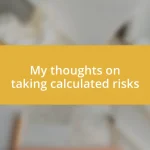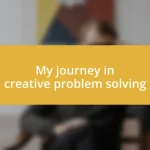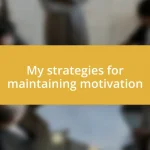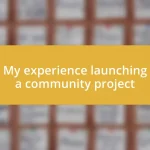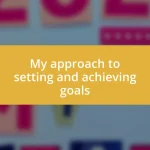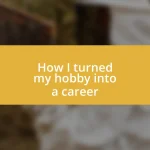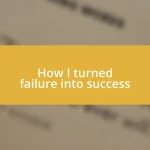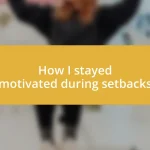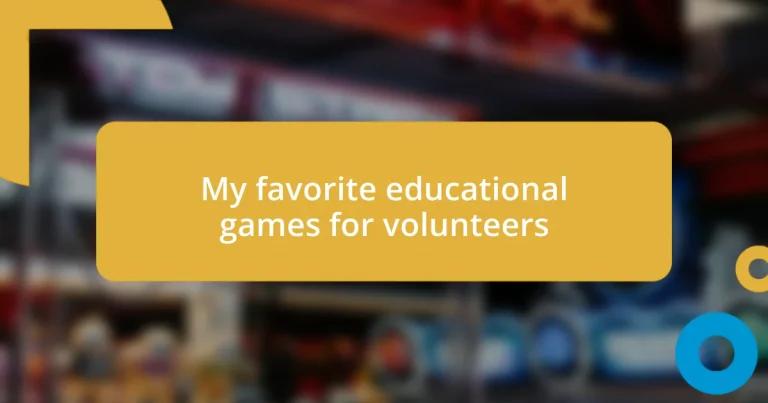Key takeaways:
- Effective educational games should prioritize engagement, relevance to goals, and adaptability to various group sizes and experiences.
- Interactive games like “The Human Knot” and “Blindfold Challenge” promote team bonding through trust, communication, and fun challenges.
- Creative community games like “Community Quilt” and “Story Circle” foster connections and shared understanding among participants, highlighting the importance of personal stories.
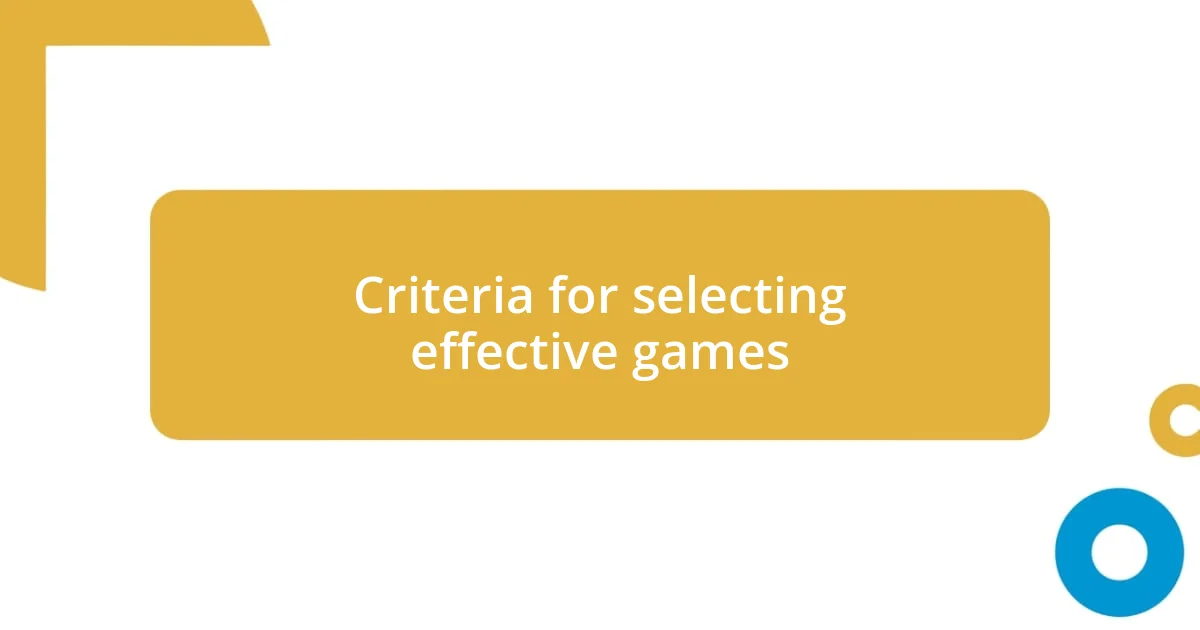
Criteria for selecting effective games
When selecting effective educational games, I believe that engagement is paramount. Think back to a game that truly captured your focus—what made it so compelling? For me, it was a team-based trivia game that sparked friendly competition and excitement, creating an atmosphere where everyone was eager to participate and learn.
Another critical criterion is relevance to the educational goals. It’s essential to choose games that align with the objectives you want to achieve. I once facilitated a workshop where we played a simulation game that mirrored real-life dilemmas faced by volunteers. Not only did it reinforce our learning, but it also created an emotional connection to the material, making the lessons stick long after the game ended.
Lastly, consider the adaptability of the game. Can it be easily modified for different group sizes or experience levels? I recall using a simple card game in various contexts: from small groups to larger workshops. Each time, I adjusted the complexity and rules, ensuring everyone could join in at their comfort level while still gaining valuable insights. It’s this flexibility that keeps educational games effective and enjoyable for diverse audiences.
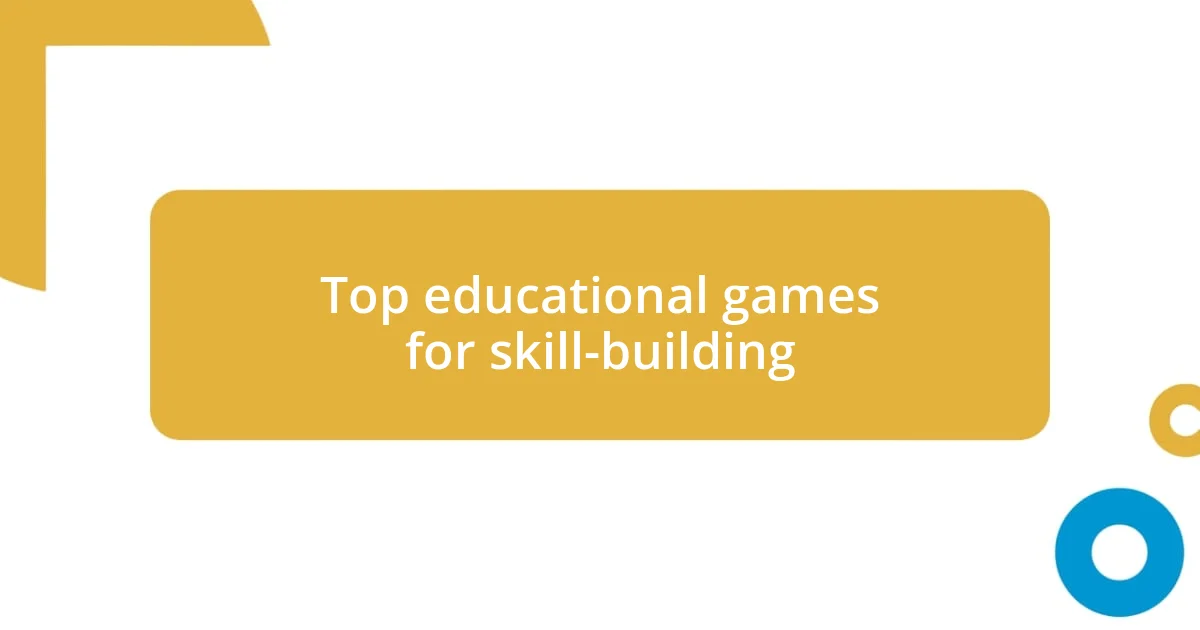
Top educational games for skill-building
One of my go-to educational games for skill-building is the “Escape Room Challenge.” This interactive game encourages teamwork and critical thinking as players solve puzzles to “escape.” I remember facilitating this experience with a group of volunteers, and the energy in the room was infectious. Watching everyone come together, brainstorming and bouncing ideas off each other, really highlighted the power of collaboration.
Here are some top educational games that can build various skills:
- Team Charades: Boosts communication and creativity as participants act out words or phrases.
- Role-Playing Scenarios: Helps in developing empathy and conflict resolution skills; I once saw participants transform their perspectives during this exercise.
- Debate Club: Enhances research and public speaking abilities; I cherish the spirited debates we had, which sharpened our critical thinking.
- Puzzle Race: Promotes problem-solving skills; seeing volunteers race against the clock to complete a complex puzzle created a thrilling atmosphere that I’ll never forget.
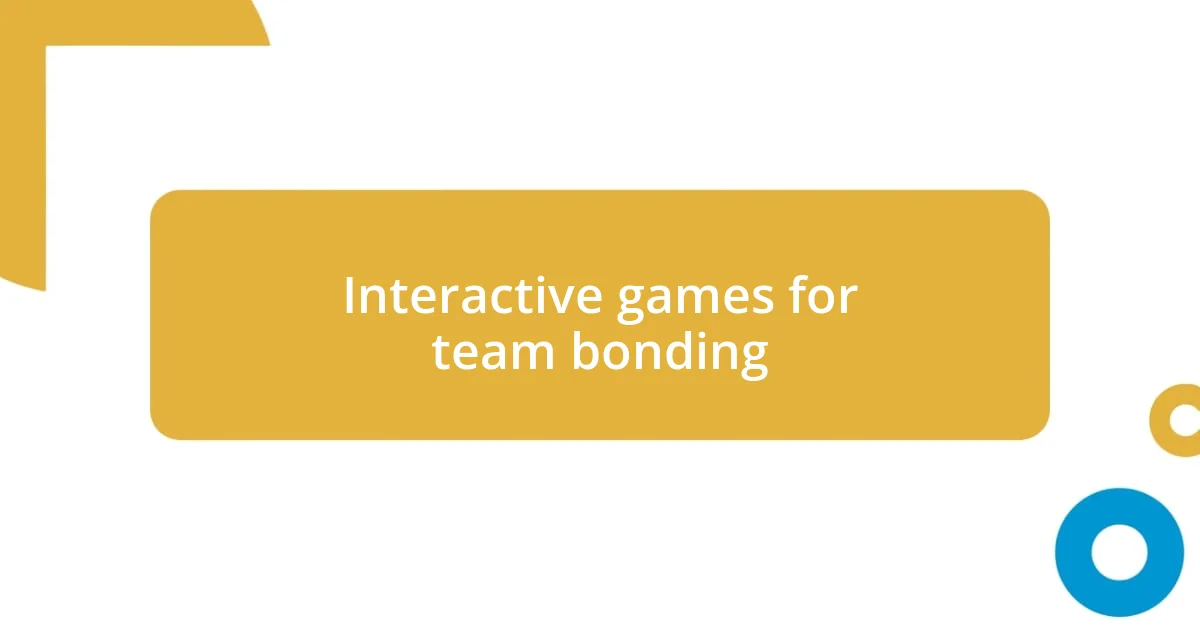
Interactive games for team bonding
Interactive games are wonderful tools for fostering team bonding. One game that stands out for me is “The Human Knot.” In this game, participants stand in a circle, reach out and grab hands with others across from them, and then must unravel the knot without letting go. I can vividly recall the laughter and camaraderie as we wrangled ourselves free. It’s not just about problem-solving; it’s about trust and communication, and you can visibly see friendships strengthen throughout the game.
Another game that resonates with me is the “Blindfold Challenge.” Here, teams must guide a blindfolded member through an obstacle course using only verbal instructions. I can still picture the thrill on everyone’s faces as they tried to navigate their friend successfully. It emphasizes clear communication and teamwork, and the moments of laughter when instructions went hilariously awry created bonds that lasted long after the game ended.
Lastly, I’ve always found “Two Truths and a Lie” to be engaging and insightful for new teams. Each participant shares two truths and one lie about themselves, while others guess which statement is the lie. This game is a great icebreaker; I remember when a volunteer shared an unexpected truth about skydiving, which led to spirited conversations and a sense of connection I hadn’t anticipated. It’s fun and helps participants learn more about one another in a relaxed setting.
| Game | Purpose |
|---|---|
| The Human Knot | Fosters trust and communication |
| Blindfold Challenge | Enhances clear communication and teamwork |
| Two Truths and a Lie | Encourages icebreaking through personal connection |
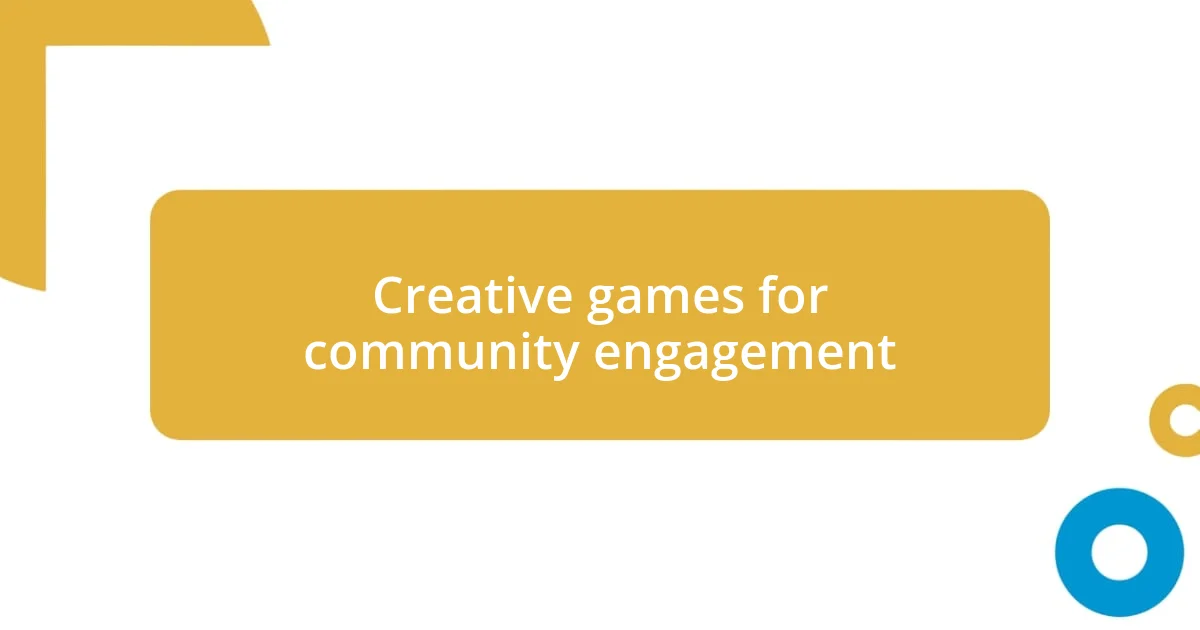
Creative games for community engagement
Engaging communities through creative games can foster unexpected bonds. One of my favorites is “Community Quilt.” Participants bring fabric squares representing their stories, and we piece them together. It’s incredible to witness the pride as each person shares the meaning behind their square. I remember one volunteer revealing how her grandma’s garden inspired her square—it created an atmosphere of nostalgia and connection that was truly heartwarming.
Another game that I find particularly effective is “Story Circle.” In this activity, each participant shares a short story related to a common theme, and I guide the circle, prompting with questions to dive deeper. I still smile when I think about a volunteer recounting their journey to find a lost pet. Not only did it spark laughter, but it also led to moments of vulnerability where others shared their own heartfelt experiences, weaving a powerful tapestry of shared understanding.
Lastly, I can’t overlook “Community Scavenger Hunt.” This interactive game sends participants around the neighborhood, looking for items or answering questions related to local history. What stands out to me is how these hunts uncover hidden gems within the community. I vividly recall the excitement of a group discovering an old well in the park and how that simple find turned into a discussion about preserving our community’s history. How many stories lie waiting to be discovered in our own backyards?
